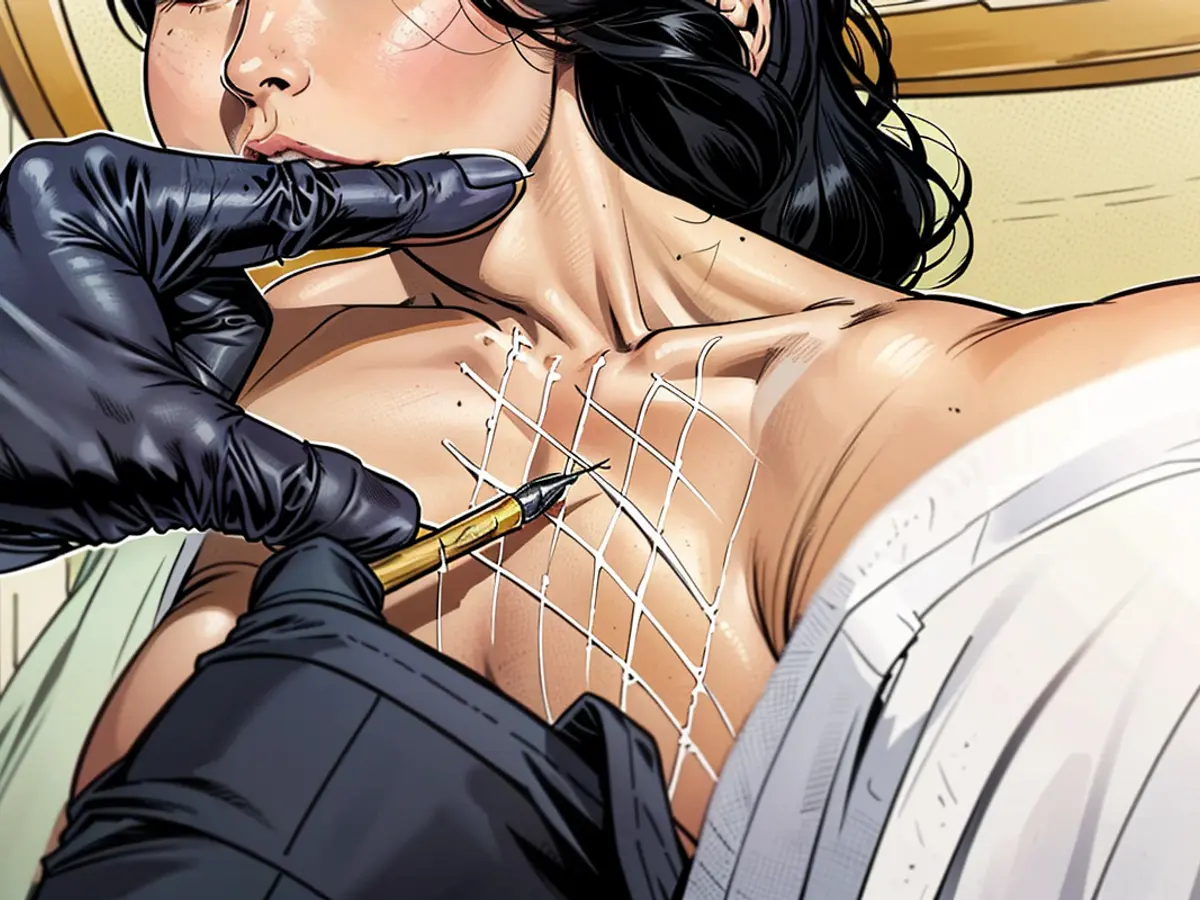Excessive sweating condition known as hyperhidrosis. - Perspire while waiting for the physician's arrival.
Sweating is a common occurrence, be it due to physical activity, heat, or excitement. However, it can be uncomfortable when encountering someone with sweat stains on their clothing or a sweaty hand. Thankfully, these situations rarely happen. On the other hand, almost a million people in this country sweat profusely regardless of external temperature, exertion, or emotions. They suffer from hyperhidrosis.
There are two forms of excessive sweating: primary and secondary. In the former case, the cause cannot be pinpointed, while the latter is a symptom of an illness like the flu or hormonal changes during menopause. Another type is bromhidrosis, where the sweat has an unusually strong smell.
Sweating vs. Hyperhidrosis: Severity Matters
Although hyperhidrosis is not about the amount of sweat, it's the timing. A healthy person can lose multiple liters of sweat per day in hot weather or intense physical activity. Hyperhidrosis, as per medical standards, refers to sweating that happens regardless of temperature, unexpectedly, and uncontrollably. It's categorized into three levels, with the most severe having glands measuring more than 20 centimeters across and "pouring out" sweat.
For those afflicted, the main challenge is social interactions, particularly with partners. The constant sweating can irritate the skin, resulting in redness, pimples, and even a sense of foreign objects. It may also impact grip strength (from sweaty hands) and may render a touchscreen unresponsive. The feet may have wet skin all the time, leading to peeling skin or the need for larger shoes with absorbent inserts. Some individuals carry extra underwear to work. Excessive skin moisture can lead to health issues, including bacterial infections, fungal growth, and wart formation.
The Mystery Remains: What Causes Hyperhidrosis?
The line between normal sweating and hyperhidrosis is not about volume, but timing. Primary hyperhidrosis does not have a clear cause - it's either linked to organic, hormonal, or psychological factors, or it remains unexplained. In severe cases, there may be a malfunctioning thyroid gland or hormonal imbalances, while milder cases might be triggered by anxiety or stress. Experts at various universities provide consultations for those affected. The German Hyperhidrosis Center is in Munich. Numbers vary, with estimates ranging from 1-5% of the German population being affected.
Diverse Treatment Approaches
Medical Antiperspirants
Many antiperspirants contain aluminum salts, which enter the pores, bind to keratin, and seal or narrow the sweat glands. The concentration determines the depth of penetration. While these products can be purchased at pharmacies, they may trigger allergic reactions or skin irritation. They are more suitable for milder cases of hyperhidrosis.
Botox Injection
The interference of the nerve toxin Botulinum Toxin with the skin interrupts muscle movement, hence, the sweat glands, too. This method is suitable for sweaty hands and feet. Botox injections for axillary sweating are now covered by health insurance with a valid indication. Each treatment costs 500-1000 euros and requires repeating every six months.
Cream with Glycopyrroniumbromid, GPB
A new, prescription-only cream, Axhidrox by Dr. Wolff, targets armpit hyperhidrosis. The active ingredient, glycopyrroniumbromide (GPB), inhibits the transmission of signals between the nerve and the sweat gland. It's a type of anticholinergic, long used as tablets to control uncontrollable sweating. Side effects like dry mouth, fatigue, and visual disturbances occur less frequently with the cream.
One more potential solution that may possibly lack any side effects is iontophoresis. This is an electric current treatment where hands or feet are submerged in a water bath, or a sponge can be placed underneath the armpits. An insignificant electric current is passed through the water. It is hypothesized that the sweat trigger, which initiates sweating, is raised by electrical stimulation. A dermatologist can provide you with a device for this self-treatment at home. However, one downside is that this remedy requires daily use. Additionally, the treated areas tend to dry out.
An alternative approach: Suction of Sweat Glands
This method is ideal for individuals who heavily perspire in their armpits. The region is first numbed with an anesthetic. Next, fluid is pumped into the targeted site. Then, a physician uses a metal rod to detach the tissue. The relevant tissue, along with the sweat glands, is then sucked out. About 80% of the glands can be removed using this approach. Some sweat still occurs, although it can be easily managed with deodorant. Sweating stops right after the process, as sweat glands cannot regenerate. Sweating in other regions also does not escalate. This removal of sweat glands is practiced in just a few clinics and is typically not covered by health insurance.
An outdated yet effective technique: Sweat Gland Removal
The surgical excision of sweat glands is an old-fashioned method, but it was frequently covered by insurance. In this procedure, the entire sweat gland area under the armpits is removed. Only a 10 to 20 centimeter long scar remains, which can create tension and discomfort in the shoulder area. Nearly 90% of the sweat glands are eliminated with this method, but the process is more complex, and the scar can pose a drawback.
A viable but not risk-free option: Sympathectomy
During a sympathectomy, a section of the sympathetic nerve is removed by an endoscopic operation at both sides of the spinal column. The sympathetic nerve is a component of the autonomic nervous system. From it, small nerve branches extend to the skin. They control sweating. To halt sweating on the hand, a half centimeter between the third and fourth rib is removed. The nerve branches, which lead to the hands from this spot, are subsequently paralyzed. To stop sweating on the forehead, the nerve is cut between the first and second rib. A side effect of this operation is compensatory sweating: sweat from the hand or forehead is rerouted to the back or abdomen. For most patients, this is considerably less disturbing.
The sympathetic nerve excision entails numerous bodily and, in some cases, psychological hazards. It should be a last resort if all other treatments fail.

Read also:
Despite using medical antiperspirants or applying Botox injections, the strong smell of sweat persists for some individuals with hyperhidrosis, leading to discomfort in social interactions. Prolonged sweating can also result in a sweat breakout, further exacerbating the issue.








